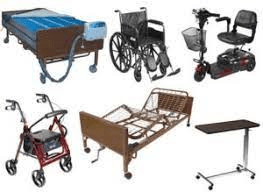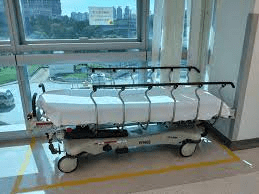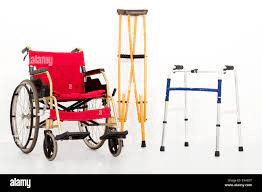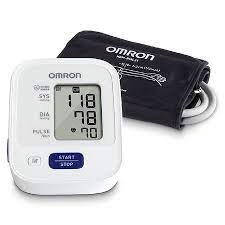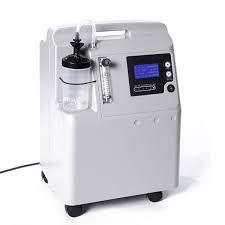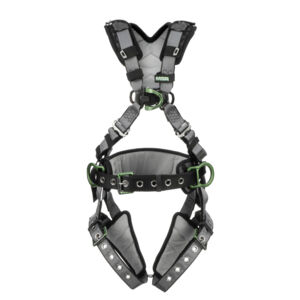Introduction
Care homes play a vital role in providing a nurturing environment for individuals who require assistance with daily activities and medical care. The quality of care provided in these facilities depends not only on the expertise of the staff but also on the equipment used to support and enhance the residents’ well-being. In this article, we will explore the various types of equipment used in care homes, from essential medical devices to assistive tools that promote independence and mobility.
Table of Contents
- Essential Medical Devices 1.1 Hospital Beds 1.2 Wheelchairs and Mobility Aids 1.3 Blood Pressure Monitors 1.4 Oxygen Concentrators
- Assistive Devices 2.1 Lift Chairs and Hoists 2.2 Transfer Boards and Slings 2.3 Adaptive Utensils and Eating Aids
- Safety and Monitoring Equipment 3.1 Fall Detection Alarms 3.2 Wanderer Tracking Systems 3.3 Bed and Chair Alarms
- Comfort-Enhancing Equipment 4.1 Pressure-Relief Mattresses 4.2 Recliner Chairs with Heat and Massage Features 4.3 Memory Foam Cushions
- Recreational and Cognitive Stimulation Tools 5.1 Activity Boards 5.2 Puzzle Games and Books 5.3 Multi-Sensory Equipment
Essential Medical Devices
1.1 Hospital Beds
Hospital beds are a cornerstone of care home equipment. These beds are designed to provide comfort, support, and safety for residents with mobility issues or medical conditions. Hospital beds can be adjusted to different positions, making them moving and handling it easier for caregivers to attend to the residents’ needs and prevent pressure ulcers.
1.2 Wheelchairs and Mobility Aids
Wheelchairs and mobility aids grant residents and carers the freedom to move around and maintain independence. Care homes should have a range of wheelchairs available to suit carers’ various needs, from manual to electric-powered options.
1.3 Blood Pressure Monitors
Regular monitoring of blood pressure is crucial in managing residents and patients’ health. Blood pressure monitors allow caregivers to keep track of residents and patients’ vital signs and respond promptly to any concerning changes.
1.4 Oxygen Concentrators
For residents with respiratory conditions, oxygen concentrators provide a steady supply of oxygen. These devices are compact and ensure that residents receive the full supply of oxygen they need to breathe comfortably.
Assistive Devices
2.1 Lift Chairs and Hoists
Lift chairs and hoists aid residents in safely transitioning from a sitting to a standing position. These devices reduce the risk of falls and prevent strain on both residents and caregivers moving them.
2.2 Transfer Boards and Slings
Transfer boards and slings facilitate and assist the safe transfer of residents between different surfaces, such as the floor, beds and chairs. They promote independence and reduce the risk of accidents during transfers.
2.3 Adaptive Utensils and Eating Aids
Residents with physical limitations may face more pain and challenges while eating. Adaptive utensils and eating aids, such as non-slip plates and utensils with easy-grip handles, enable residents to enjoy meals comfortably.
Safety and Monitoring Equipment
3.1 Fall Detection Alarms
Fall detection alarms are essential in care homes, as they alert staff when a resident experiences a serious injury or fall. Prompt emergency response to falls can prevent injuries and ensure residents receive immediate assistance.
3.2 Wanderer Tracking Systems
For residents prone to wandering, wanderer tracking systems offer added security. These systems enable staff to locate residents quickly, ensuring their safety within the care home’s premises.
3.3 Bed and Chair Alarms
Bed and chair alarms notify caregivers when a resident attempts to leave their bed or chair without assistance. This feature prevents potential falls and helps maintain a safe environment.
Comfort-Enhancing Equipment
4.1 Pressure-Relief Mattresses
Pressure-relief mattresses distribute weight evenly, reducing the risk of pressure sores for residents who spend extended periods in bed. These mattresses promote comfort and overall well-being.
4.2 Recliner Chairs with Heat and Massage Features
Recliner chairs equipped with heat and massage features offer therapeutic benefits to residents. These chairs provide relaxation and relief for sore muscles, enhancing residents’ quality of life.
4.3 Memory Foam Cushions
Memory foam cushions provide additional support and comfort when used with chairs and wheelchairs. They contour to the patient’ body and wheelchair’s shape, alleviating pressure and promoting better posture.
Recreational and Cognitive Stimulation Tools
5.1 Activity Boards
Activity boards engage residents and stimulate their cognitive abilities. These boards typically include various tasks, such as latches, buttons, and puzzles, to keep residents mentally active.
5.2 Puzzle Games and Books
Puzzle games and books provide recreational and cognitive stimulation. Residents can enjoy solving puzzles, reading, or participating in group activities, fostering a sense of community and social care.
5.3 Multi-Sensory Equipment
Multi-sensory equipment, such as light projectors and textured materials, enhances sensory experiences for residents. These tools can have a positive impact on patient mood, health and well-being.
Handling Equipment in Care Homes: Improving Efficiency and Safety
In care homes, providing the best possible care for residents is the top priority. To achieve this, caregivers must have access to the right tools and equipment to ensure both efficiency and safety. Handling equipment plays a crucial role in moving and handling the daily operations of care homes, facilitating various tasks and enhancing the well-being of residents.
Controlled and Easy Access: Enhancing Security and Convenience in Care Homes
In the realm of care homes, ensuring the safety and well-being of residents is of paramount importance. At the same time, providing an environment that promotes independence and freedom for residents is equally crucial to social care. Striking the right balance between security and convenience can be achieved through the implementation of controlled and easy access systems.
What is Controlled Access?
Controlled access refers to a security system that regulates entry to specific areas within a care home. This system ensures that only authorized individuals, such as residents, staff members, and approved visitors, can gain access to certain spaces. Controlled access is achieved through the use of electronic key cards, biometric data, or access codes.
What is Easy Access?
Easy access, on the other hand, focuses on providing a convenient and hassle-free experience for residents when moving within the carer or home. It aims to remove barriers that could impede residents’ mobility and independence. Easy access can be facilitated through automatic doors, wheelchair-friendly entrances, and accessible pathways.
The Importance of Striking a Balance
Balancing controlled access and easy access is critical in care homes. While security measures are necessary to safeguard residents and sensitive areas, overly restrictive access can hinder residents’ sense of autonomy and freedom. Striking the right balance ensures residents can move freely within designated areas while maintaining a secure environment.
Chest and Leg Straps
In care homes, the safety and well-being of residents are of utmost importance. To provide the best care possible, caregivers must utilize appropriate equipment that ensures both the safety and comfort of residents. Chest and back belts and leg straps are essential accessories used in various situations to secure and support residents during transfers and mobility assistance.
Conclusion
The full range of equipment used in care homes plays a fundamental role in ensuring the safety, comfort, and quality of care provided to residents. From essential medical devices to assistive tools and comfort-enhancing equipment, each piece handling equipment serves a specific purpose in supporting the unique needs of individuals residing in care homes.
FAQs
- Q: How do hospital beds benefit care home residents? A: Hospital beds provide comfort, support, and safety, and their adjustable features facilitate care.
- Q: What are the advantages of using adaptive utensils in care homes? A: Adaptive utensils empower residents with physical limitations to maintain independence during meals.
- Q: How do fall detection alarms improve resident safety? A: Fall detection alarms allow caregivers to respond promptly to falls, reducing the risk of injuries.
- Q: Why are pressure-relief mattresses essential for residents who spend extended periods in bed? A: Pressure-relief mattresses prevent pressure sores and promote overall well-being for bedridden residents.
- Q: How do multi-sensory equipment enhance the care home environment? A: Multi-sensory equipment offers stimulating experiences, positively impacting residents’ mood and engagement.
